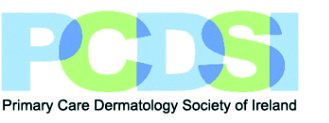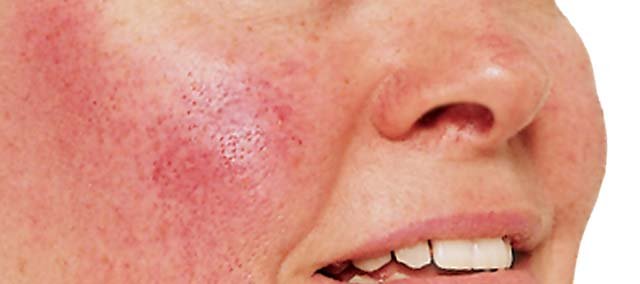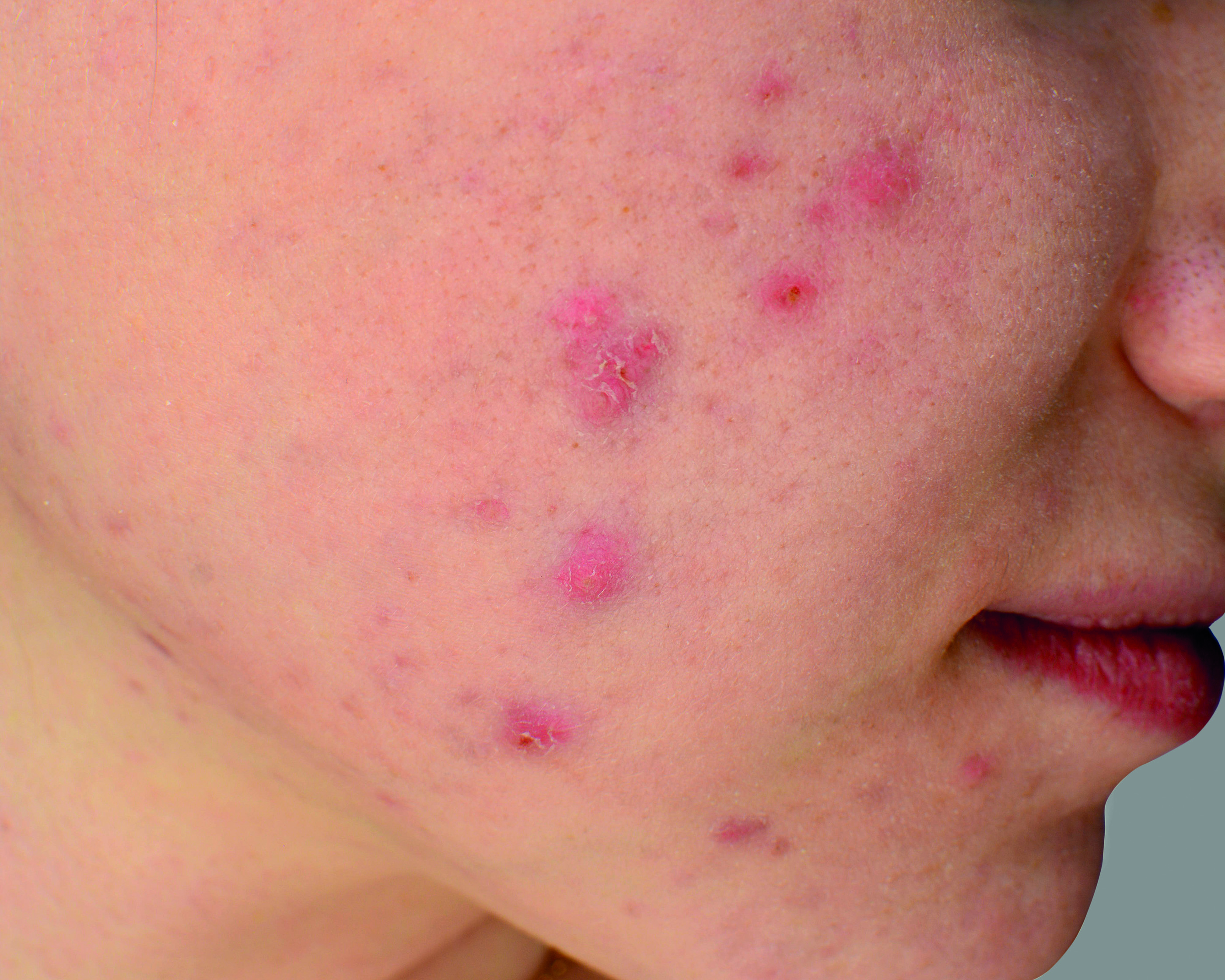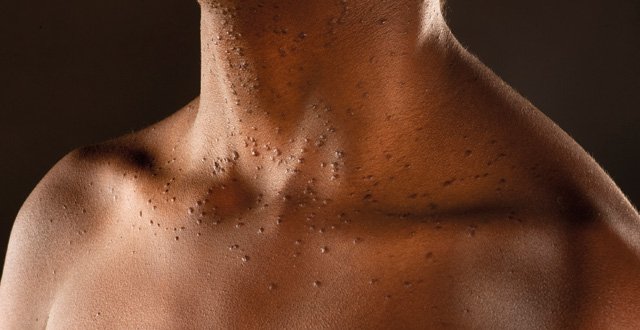<h3>Eczema the ‘primary factor’ in allergy development</h3>
Eczema is the primary factor in the development of allergies in patients with eczema, heard the eczema symposium at the recent Primary Care Dermatology Society of Ireland (PCDSI) Annual Scientific Meeting.
PCDSI Chairperson GP Dr Finbar Fitzpatrick, speaking to the <strong><em>Medical Independent</em></strong> (<strong><em>MI</em></strong>) following the symposium, explained that speakers highlighted a number of important aspects, including a changed perspective in the aetiology of childhood eczema.
“The eczema is the primary factor and the allergy is the secondary development. Because the skin barrier isn’t intact allergens can be absorbed through the skin and you can get an altered immune response and then you develop the allergy because of that, rather than the allergy being primary, which is what most lay people think,” Dr Fitzpatrick related.
This issue was highlighted in a talk on allergy in atopic dermatitis by Dr Deirdre Buckley, Consultant Dermatologist, Royal United Hospital, Bath, UK.
Dr Buckley relayed the importance of a normal diet in infancy and early childhood, including peanuts and eggs. Having peanuts as a normal component of diet reduces the risk of developing allergic atopic eczema, rather than increasing it, Dr Buckley said.
Limerick GP Dr Johnny Loughnane, in his presentation on topical anti-inflammatory therapy in eczema, looked at the use of topical steroids and their appropriate role in the management of eczema and the emerging role of tacrolimus ointment in moderate eczema and the maintenance of eczema.
He also highlighted the maintenance role in some patients of a weekend topical steroid regime, ie, using steroid cream two days a week.
A number of speakers noted the risk of ‘steroid phobia’ in the community and on the Internet, but outlined that in reality most dermatologists feel topical steroids are being under-used in primary care, Dr Fitzpatrick said.
Dr Loughnane highlighted the value of ointments and advised that GPs prescribe 90 per cent ointments and 10 per cent creams, as there are fewer preservatives in ointments and they are 10 per cent more effective than creams.
Dermovate is the most potent steroid and hydrocortisone is the weakest. Dermovate is 600 times more potent than hydrocortisone. Mild and moderate steroids, such as Eumovate and hydrocortisone, are relatively safe to use in children, the meeting heard.
Infection in eczema, mainly seen in primary care, was also covered. GPs were advised on how to identify herpetic eczema and treat it as a medical emergency during a presentation by Dr Rosemarie Watson, Consultant Paediatric Dermatologist, Our Lady’s Children’s Hospital, Crumlin.
Dr Watson also mentioned the CREAM study in the UK involving 300 children, which found there was no benefit seen in oral or topical antibiotics over steroids in eczema.
Mr Paul Herriot from Lyric FM provided an absorbing insight for delegates into the patient experience and psychological impact of living with severe eczema all his life.
This was the first time a patient spoke at the PCDSI conference and there are plans to include patients in the line-up at future conferences.
Delegates also heard that 1-to-2 per cent of the EU population is allergic to fragrances. Methylisothiazolinone is a preservative found in sunscreen, soaps and detergents and can cause allergic reactions in patients.
<h3>Huge turnout at PCDSI conference</h3>
Around 400 doctors attended the Primary Care Dermatology Society of Ireland (PCDSI) Annual Scientific Meeting in Limerick recently.
The three-day event saw an average of 200 doctors in attendance each day, with a day-long eczema symposium featuring 11 presentations opening the event on Thursday 8 March.
According to PCDSI Chairperson, GP Dr Finbar Fitzpatrick, eczema is an every day presentation in general practice and GPs are the mainstay of the management of eczema in clinical practice.
It is understood that around 12 per cent of general practice consultations are skin-related and for GPs with an interest in dermatology, this can rise to as high as 20 per cent.
Traditionally, at undergraduate level, there has been a gap in dermatology education and some doctors on GP training programmes feel that their dermatology education is incomplete, Dr Fitzpatrick said.
“This is a place where the PCDSI can fit in, completing a GP’s education in dermatology,” he advised.
A further 10 presentations took place on Friday 9 March, and 14 talks were held on Saturday 10 March, when advanced and basic sessions were run concurrently for GPs with varying skills and expertise in dermatology.
Dr Fitzpatrick paid tribute to Limerick GP Dr Johnny Loughnane, who put together the programme for the event.
Next year’s meeting will take place in Galway at the Galmont Hotel on 21-23 February.
<h3>Topical treatment more effective than oral tablets in fungal nail infections</h3>
Research shows that some 82 per cent of fungal nail infections are clinically cured at six weeks with Canespro, Dr Rachel Morris-Jones, Consultant Dermatologist, King’s College Hospital, London, told the recent Primary Care Dermatology Society of Ireland (PCDSI) Annual Scientific Meeting.
Canespro (40 per cent urea), used for the treatment of onychomycosis, can be purchased over-the-counter (OTC) and applied by the patient to the affected nail plate. The nail is then covered and left overnight. This is repeated daily for four-to-six weeks.
Dr Morris-Jones, who favours the treatment, said the advantages are that the patient can apply the treatment themselves, no tablets are involved, the treatment is pain free and there is an immediate improvement in nail appearance.
While there has been promise in regard to laser treatments for fungal nail infections, unfortunately the relapse rate is high, Dr Morris-Jones noted.
In terms of oral tablets, she advised that amorolfine has a 20 per cent cure rate at three-to-four months and terbinafine has a 56 per cent cure rate at 10 months.
Key signs of fungal nail infection include thickening of the nail, nail discolouration and crumbling of the nail.
The presentation by Dr Morris-Jones on fungal skin infections examined tinea pedis, corporis and cruris, tinea capitis, pityiasis versicolor, seborrhoeic dermatitis, onycomycosis and vulval candida.
She advised delegates at the PCDSI meeting to take a sample (skin and/or nail scrapings) from the affected area at a patient’s first visit, if time and resources allow.
Dr Morris-Jones noted that tinea pedis, or athlete’s foot, is incredibly common and most patients will treat themselves using OTC products. But it can be recurrent and is characterised by itchy skin and mascerated skin in toes with no spaces.
“Tinea pedis is incredibly common. It’s obviously itchy and it tends to start in the fourth toe web… this is a really good place to look for the start of tinea pedis,” Dr Morris-Jones advised.
She highlighted that some patients have toes that fit close together with no air or gap between them and that efforts should be made to try and change the environment and dry-out the skin to avoid tinea pedis recurring.
A number of OTC products can do this and patients can be in charge of their own foot management going forward, she advised.
<h3>Rapid access photo-triage for haemangiomas</h3>
A new rapid access national photo-triage investigation pathway for infantile haemangiomas is available for primary care healthcare professionals, heard the Primary Care Dermatology Society of Ireland (PCDSI) Annual Scientific Meeting in Limerick.
Dr Rosemarie Watson, Consultant Paediatric Dermatologist, Our Lady’s Children’s Hospital, Crumlin, noted the development in her presentation on common lesions in the newborn.
The service, established by Cork-based Consultant Dermatologist Dr Michelle Murphy and the HSE, allows GPs to send a photo of a haemangioma along with the baby’s date-of-birth and date of the photo.
Dr Murphy reviews the image and decides if referral is advised. She also provides the contact details for the local dermatology team for referral. The email is hse.haemangioma@hse.ie.
New parents can be concerned about skin lesions, but they are very common in newborns and many fade and disappear spontaneously, Dr Watson said.
“It’s our job to reassure, when it’s appropriate to reassure and to investigate or refer when that is appropriate also,” Dr Watson noted.
It is important to be aware of precursor lesions in haemangiomas as one may need to act on these quickly, Dr Watson outlined.
The first aspect noticed is blanching and a bruised appearance, Dr Watson said. Classic infantile haemangiomas are not present at birth and this is an important point to state in the history, when referring. They usually develop in the first four weeks of life.
Four weeks to three months is the most worrisome time in terms of proliferation. Some 90 per cent stop growing by six months and accelerated growth occurs between 5.5– seven weeks.
Periocular haemangiomas need instant referral and haemangiomas on the upper eyelids have more complications. Deep haemangiomas with retrobulbar extension and squint require early treatment.
Meanwhile, large haemangiomas can be very troublesome, but respond excellently to propranolol treatment, Dr Watson noted.
Haemangiomas on the beard location, cheek, chin and lower lip areas are linked to a risk of airway involvement and require referral. Referral is also recommended in children with multiple haemangiomas.
Port wine stains (PWS) affect one-in-300 babies and the majority are on the face. They can vary from 1cm to covering half the body.
Parents are often concerned about their cosmetic effect. Dr Watson said that laser in early childhood is recommended. Some 70 per cent of patients will get 50 per cent lightening with laser. But 10 per cent won’t get significant lightening, therefore it is “not a magic wand”, Dr Watson cautioned.
Dr David Paige, Consultant Dermatologist, Barts Health NHS Trust, UK, followed up with an informative talk on common rashes in newborns.
<h3>Recognising psychocutaneous disease in general practice</h3>
The psychocutaneous area is a relatively new sub-specialty interest in dermatology, Dr Bart Ramsay, Consultant Dermatologist, University Hospital Limerick, told delegates at the Primary Care Dermatology Society of Ireland (PCDSI) Annual Scientific Meeting.
His presentation on psychocutaneous disease aimed to enhance recognition of the condition and treatment.
“Managing patients in this cohort can be challenging and the aetiology of psychocutaneous disorders can be quite complex,” Dr Ramsay explained. “We looked back at recent years’ experience with these patients and when we referred patients to our clinical psychologist, we find that there can be distress associated with an underlying skin condition, just like psoriasis. There can be repetitive behaviours causing damage to the skin…then there can be things that have happened in the patient’s life that led to the development of skin disease.
“The assessment that we find from our clinical psychologist… can uncover issues including past physical and emotional abuse; psychological trauma of different types, sometimes grief, but sometimes suicidal ideation; and often, these are issues that are rarely uncovered in the initial referral.”
Dr Ramsay spoke about four areas: Cutaneous signs of eating disorders; body dysmorphic disorder (BDD); delusion of parasites; and <em>dermatitis artefacta</em> (DA).
Dr Ramsay detailed the cutaneous signs of eating disorders, including: Disordered diet/malnutrition (lanugo hair); vomiting-related signs (acute tears or erosions of the knuckles, callosities, parotitis); laxative/drug abuse (pruritus); and psychocutaneous disorders (self-inflicted trauma).
A detailed outline of skin, hair and nail signs were highlighted, including telogen effluvium and androgenic alopecia; brittle nails and digital clubbing; and enamel erosion, among others.
BDD is quite common and could be present in up to 13 per cent of the general population. Patients are said to be rich in symptoms, but poor in signs, Dr Ramsay related.
Up to 15 per cent of people who attend cosmetic surgery may have BDD. The condition is under-recognised in dermatology, Dr Ramsay added.
It is important to be aware of the disorder, as almost 60 per cent of BDD patients will think about suicide and 25 per cent attempt suicide, Dr Ramsay said.
Patients with delusions of parasites have a psychiatric disorder, but they present to dermatologists. Patients often look well but usually reject psychiatric referral. They have sensations of crawling, biting and stinging, Dr Ramsay explained.
DA refers to self-inflicted cutaneous lesions and is seven times more common in women. It may be symmetric, but can be asymmetric and often in reach of the dominant hand.
It can be seen as facial rashes and linear lesions and can be induced by cutting, rubbing, picking, etc. Dr Ramsay said meditation is being explored to help patients with DA.
<h3>Many viral skin diseases ‘vaccine preventable’ — consultant</h3>
In MMR (measles, rumps, rubella) vaccine given to an unvaccinated person or a person who has been partially vaccinated within 72 hours following exposure to measles has been shown to prevent infection.
Dr Catherine Fleming, Consultant in Infectious Diseases, University Hospital Galway, made the remark regarding post exposure prophylaxis during her presentation, ‘What’s New in Viral Skin Disease’, at the Annual Scientific Meeting of the Primary Care Dermatology Society of Ireland (PCDSI), which recently took place in Limerick.
Dr Fleming focused on several viruses in her address, including measles, zoster and HPV.
She highlighted specific cases with each virus and noted that many of the viruses are vaccine-preventable infections and a greater focus on prevention is required.
In relation to measles, she related that Limerick is in the midst of a measles outbreak. On 17 February last, there were 20 cases of measles in the Limerick area, Dr Fleming advised.
Nine of the 20 were under the age of five and all were unvaccinated. Eleven of the 20 were aged five-to-34 and two had at least one MMR vaccine dose, Dr Fleming said.
Some 95 per cent vaccination in the community is required for herd immunity to prevent transmission. If vaccination rates are lower than that, one case can spread.
At age 24 months, the MMR vaccine rate in Limerick city is 88 per cent, and 93 per cent in the Mid West.
If measles is suspected, the advice is to isolate the patient immediately and obtain a sample for diagnosis, Dr Fleming said.
Turning to shingles (herpes zoster) and chicken pox (varicella), Dr Fleming pointed out that chicken pox does not cause shingles, but that shingles can occasionally cause chicken pox.
Chicken pox patients under the age of one year and over the age of 12 years should receive treatment, as well as patients with chronic skin or lung disease, pregnant women and immunosuppressed patients.
Dr Fleming recommended GPs treat shingles as early as possible, within 72 hours of the onset of rash. She outlined that everyone should be treated and definitely if over 50 years of age. Once the rash is present for over 72 hours, it is not clear that treatment makes a difference, she said.
“In adults, we are now advocating varicella vaccination to prevent shingles. The idea is to boost this waning T-cell immunity to the varicella zoster virus. The idea is to reduce the risk of shingles,” Dr Fleming noted.
<h3>Managing the skin barrier</h3>
In informative presentation titled ‘Managing the Skin Barrier — Moisturisers, Bandaging and Wet Wraps’ was delivered at the Primary Care Dermatology Society of Ireland (PCDSI) eczema symposium, which took place during its Annual Scientific Meeting in Limerick.
Ms Sheila Ryan, Dermatology Advanced Nurse Practitioner, University Hospital Limerick, give a detailed talk on how health professionals can educate patients and parents on protecting the skin and limiting irritation and itching.
She recommended that people with eczema avoid bubble baths, soaps, toilet wipes and baby wipes, especially where the latter contain the chemical Kathon, which can cause allergic skin reactions.
Ms Ryan advised that children should sleep in their own bed to minimise excessive heat, pets should be kept out of the bedroom, and fluffy toys should be minimised and placed in the fridge to keep cool.
Paraffin-based creams have been linked to 37 deaths from fire across the UK since 2010, Ms Ryan highlighted. She noted that there is an increased risk with impregnated clothing/dressings, smokers, elderly/disabled, airbeds and other medical devices.
Turning to the use of bath oils and washing products in the management of eczema, Ms Ryan explained that they are used to cleanse and hydrate the skin.
Patients should bathe in lukewarm water for 10-to-15 minutes. Recommended bath oils include Oilatum, Aveeno and Hydromol. Oilatum also has a shower gel formulation. Meanwhile, antiseptic bathing options for eczema include Emulsiderm emollient and Milton bleach baths (120ml or four capfuls per 100 litres).
In relation to how to use moisturisers, Ms Ryan advised that patients consider using cream from pumps and tubes to avoid contamination. She also recommended that cream be applied in downward strokes in the direction of hairs and that massage should be avoided, as it can generate heat on the skin and possibly lead to folliculitis.
For young children, Ms Ryan encouraged ointments, bathing and covering with clothing. For older children, she suggested creams/moisturisers during the day and ointments in the evening. Healthcare professionals should also encourage self-application and parental involvement.
For adults, care depends on disease severity and lifestyle. Cream should be applied daily (ointment if severe) and a bath/shower regimen followed to avoid irritation.
With older adults, application of creams can depend on dexterity, but pumps/tubs and tubes are advised, Ms Ryan outlined. Slippage from greasy creams/oils in baths is a risk and smokers should be aware of fire hazards from paraffin creams. Heavier emollients should be used and advice given on washing.
Finally, wet wraps can also be used in the management of eczema due to their cooling effect, enhanced moisturisation, enhanced steroid penetration and protection from scratching, Ms Ryan advised.
<h3>Leg ulcers a ‘huge psychosocial burden’</h3>
Leg ulcers are a huge problem and 1 per cent of the population in developed countries will have leg ulcers at any one time, delegates at the recent Primary Care Dermatology Society of Ireland (PCDSI) Annual Scientific Meeting heard.
The majority of leg ulcers are managed in primary care and are due to venous disease. They place a huge financial burden on society and in the UK, it is estimated they cost £168-to-198 million annually, Ms Sheila Ryan, Dermatology Advanced Nurse Practitioner, University Hospital Limerick, advised in her presentation on leg ulcers.
She noted that leg ulcers have a big psychosocial burden, as they can cause social isolation.
When assessing an ulcer, she recommended physicians examine how it started, comorbidities, medications, allergies and general presentation.
It should also be noted whether or not the patient has diabetes, rheumatoid arthritis, vasculitis or peripheral vascular disease.
Other important factors are pain and nutrition, as it will be necessary to optimise the nutritional status for healing. The patient’s ability to undertake self-care and compliance should also be assessed.
Around 70-to-80 per cent of leg ulcers are venous, 10-to-20 per cent are mixed venous and arterial and 10 per cent are arterial, Ms Ryan stated.
A clinical examination should look at the site of the ulcer, as 90 per cent of venous ulcers are in the gaiter area and arterial ulcers are dorsal and plantar.
If a patient is in a lot of pain, this could suggest an arterial ulcer. Meanwhile, the size of the ulcer should be measured, surrounding skin examined and evidence of any exudate documented.
Investigations should include an ankle brachial pressure index, bloods, swab for culture (if relevant) and a biopsy if required, Ms Ryan said.
General skin care of leg ulcers includes cleaning the entire leg using water and a soap substitute. The leg can be soaked in Hydromol and moisturised using an ointment base. Removal of hyperkeratotic scales is advised.
The antiseptic drying agent potassium permanganate is effective for infected legs, Ms Ryan noted. She recommended using one permitab for a local soak in a tub and two in the bath for a 10-minute soak.
Oedema management, meanwhile, is a huge problem and services for people with leg oedema are not abundant, Ms Ryan noted. She advised getting patients to elevate legs, exercise, avoid standing and optimise skin care. Support stockings and compression should also be used where appropriate.
Arterial leg ulcers will often have a ‘punched-out’ appearance, increased pain and are typically associated with the toes, heels and bony prominence of the foot.
Surrounding skin will have a dusky erythema, be cool to touch and there will be loss of hair. There may also be decreased or absent pulses, reduced capillary refill, thickened or absent toenails and gangrene of the extremities.
Arterial management involves several factors, including vascular assessment, stopping smoking, diabetes control, blood pressure, lipids and foot and leg skin care. Avoid compression and the dressing used will be determined by the ulcer, she said.
Some 95 per cent of venous ulcers are located in the gaiter area. Pitting oedema, haemosidern deposits and lipodermatosclerosis should be noted.
Compression therapy is the gold standard for venous leg ulcers and the only treatment proven to work, she said.












Leave a Reply
You must be logged in to post a comment.